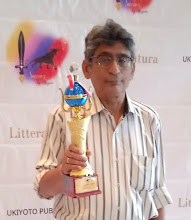Paan Singh Tomar was a real-life hero of India—a great athlete specializing in Steeplechase run winning National awards for the country. He was in army service while achieving his medals during 1958-64. He was seven times national champions and also represented India in Tokyo Asian Games in 1958. His record in 3000 Steeplechase stood the test of time for nearly a decade. After retirement he returned to his native village and tried to live happily as a farmer. But eventually the pride of India turned into an outlaw and was killed by Indian police in 1981. As a great sportsman he was unheard of, but carried a big award as a most-wanted dacoit of India’s notorious Chambal Valley.
The melancholic story of this real-life hero inspired director Tigmanshu Dhulia to make this movie titled Paan Singh Tomar that released all over India on March 2, 2012. There is no dearth of dacoit-genre films in India, but Dhulia opted for the serious kind of cinema with a strong statement. Powerful story-telling, apt technical support, brilliant cinematography and seamless editing, lilting background scores and powerhouse performances have made this movie an altogether different experience within the genre. No wonder the movie has attained the status of ‘run’ away hit.
 Talking of performances Irrfan Khan steals the thunder as usual in the title role. It was palpable how much efforts and labor he had put in to live the role apart from all the running. His characteristic wry humor adds to the personality of Pann Singh Tomar. Fresh in the Indian army Paan Singh boasted of his maternal uncle as being a ‘baghi’ (rebel) and not a dacoit. The memorable dialogue in this context ‘Rebels breed in Chambal while dacoits are found in Parliament!’ rings the air. After being forced into the career of an outlaw Paan Singh kept up the ironical comment ‘Nobody heard of me as a national champion, but the moment I became a dacoit the whole country knew me and I came to carry a huge cash award on my head!’.
Talking of performances Irrfan Khan steals the thunder as usual in the title role. It was palpable how much efforts and labor he had put in to live the role apart from all the running. His characteristic wry humor adds to the personality of Pann Singh Tomar. Fresh in the Indian army Paan Singh boasted of his maternal uncle as being a ‘baghi’ (rebel) and not a dacoit. The memorable dialogue in this context ‘Rebels breed in Chambal while dacoits are found in Parliament!’ rings the air. After being forced into the career of an outlaw Paan Singh kept up the ironical comment ‘Nobody heard of me as a national champion, but the moment I became a dacoit the whole country knew me and I came to carry a huge cash award on my head!’. The first half of the movie vividly describes Paan Singh as an athlete with his victory run of steeplechase. For his straight talking and running talent army officials decided to send him for physical training to develop into a sportsman. Honest and loyal to the core of his heart Paan Singh at the time of war regretted being a sportsman as he was not sent out to fight the enemies. Retiring in prime age Paan Singh returned to his native village and immediately got entangled in a land feud with his relatives. He did everything possible from his patriotic fervor to establish peace and amity. Failing in that he approached his army bosses for help and they guided him to the local authorities. But corrupt admin and police insulted and humiliated him. While a police inspector threw away his medals his relatives back in the village raided his home killing his old mother brutally and his family just escaped.
That was the turning point and he had no option but to take up the gun and constitute a gang with members who were also equally repressed and tortured. The second half of the film narrates his career as an outlaw leading finally to his entrapment and killing by police. In this half the director had a tricky problem of choosing between a normal dacoit drama and the enigma of Paan Singh Tomar. With a masterful balancing act he succeeds in taking his film forward without romanticizing or condemning the real-life hero while fondly preserving his true characteristic spirit till the end.
 And, so when it is over we leave the theater with a heavy heart feeling painfully for the pitiful conditions of Indian sportsmen who are not successful cricketers. Deeply moved by this unsung hero the word of mouth spread far and wide working wonders for this wonderful movie. The strong statement made by the movie in favor of Indian sports fraternity lingers on.
And, so when it is over we leave the theater with a heavy heart feeling painfully for the pitiful conditions of Indian sportsmen who are not successful cricketers. Deeply moved by this unsung hero the word of mouth spread far and wide working wonders for this wonderful movie. The strong statement made by the movie in favor of Indian sports fraternity lingers on. 

Comments
Post a Comment
Hi! Welcome! Please comment what you feel! 😊